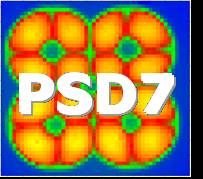Speaker
Mr
Robert Glover
(University of York)
Description
Two photon emission is a second order nuclear decay process which
can, in principle, compete with any single photon or electron decay
mechanism. In practice, such a process is very difficult to observe
in the presence of a competing single-photon decay due to it being
indistinguishable from Compton scattering. The two-photon branch
can, however, be distinguished where no single photon decay is
possible, such as the case of a 0+ -> 0+ transition which can only
proceed by electron emission (or pair production for high energy
transitions). The few examples of nuclear two-photon emission so
far measured are in 16O, 40Ca and 90Zr, where the lowest excited
state unusually has spin/parity of 0+. In each case, the two-photon
branch was found to be ~10-4 [1].
We have carried out a search for two-photon emission from the first
excited 0+ state in 72Ge. This isotope is a major component (28%)
of natural germanium. Two highly segmented coaxial hyperpure
germanium detectors were used as both the target and the detector.
The excited 0+ state at 690 keV in 72Ge was excited within the
detector using 2.45 MeV pulsed neutrons from the unique pulsed
neutron facility at Chalmers University of Technology. The
detectors were triggered with a delay to the prompt neutron pulse
which allowed the clean seperation of the transition from the 0+
state of interest, which has a 400ns half-life. For each event, the
full pulse shapes in each detector segment were recorded. In the
analysis, two photon events will be distinguished from single
electron events on the basis of their multiplicity and their range,
as deduced from the pulse shape analysis. Reference pulse shapes
for the detectors were obtained from a seperate measurement using a
collimator source and x-y tracking table at Liverpool.
Simulations of the detector setup with Monte Carlo code, GEANT4,
indicate a high efficiency for detection of two-photon decays within
the detector of around 20%. The details of these simulations will
be reported as well as the outcomes of the ongoing analysis. The
effects on the recorded pulse shapes of the fast neutron flux will
be discussed.
[1] J.Kramp et al., Nucl. Phys. A474, 412(1987)
Primary author
Mr
Robert Glover
(University of York)




